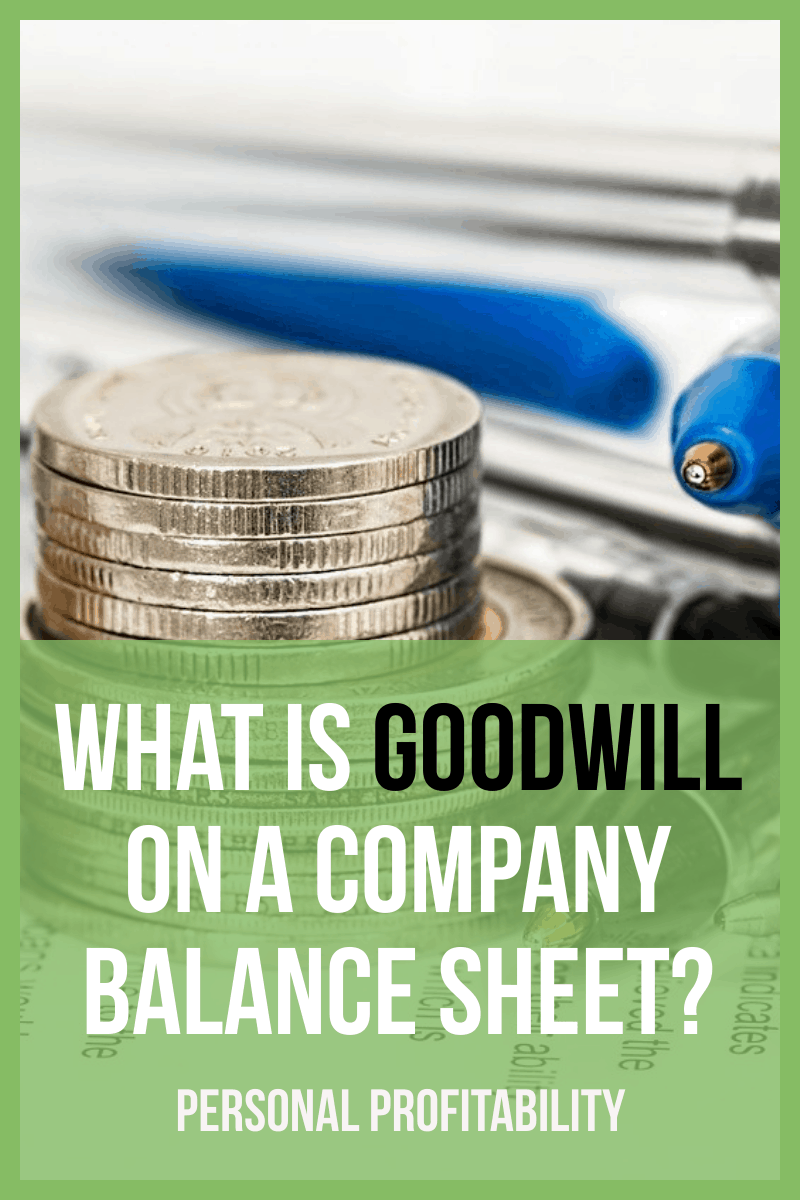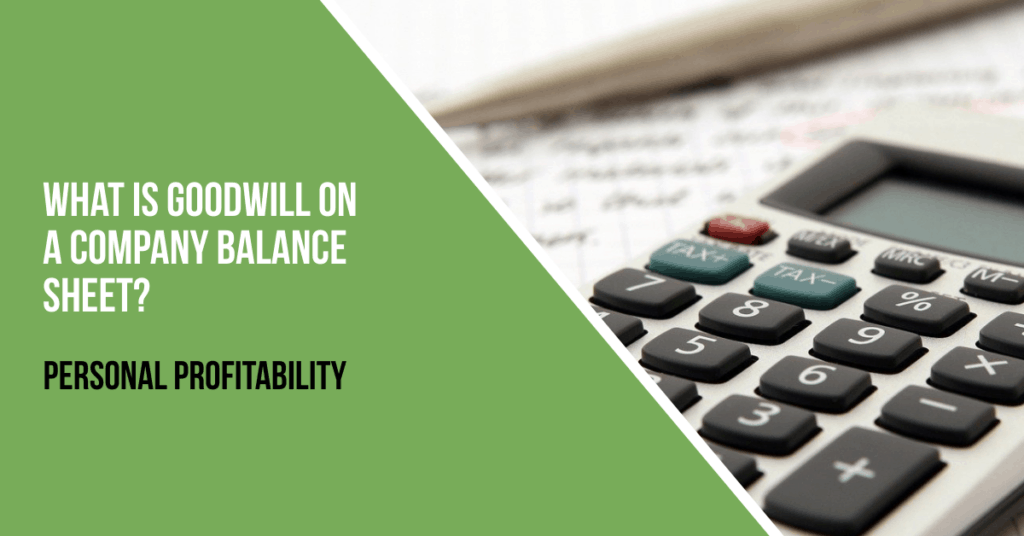When looking at company financial statements, most of the items are self-explanatory. Almost everyone can easily explain revenue, expenses, assets, and liabilities. However, some of the line items are not as clear. Someone recently asked me about goodwill on the balance sheet. It is an important line to understand when looking at a balance sheet.

Intangible Assets
When looking at a balance sheet, goodwill can be found as an asset account. Goodwill is an intangible asset, meaning an asset that cannot be sold or transferred. Cash, investments, equipment, factories, and other tangible assets are fairly easy to appraise. Intangible assets, such as patents and goodwill, are more difficult to use as a benchmark of company value.
Where Does Goodwill Come From?
Goodwill exists when a company is purchased for an amount higher than its assets. For example, if a company had fair value assets of $100 million and it was purchased for $120 million, the $20 million difference is considered goodwill. That goodwill represents the company value above its assets.
The $20 million represents the value of the company’s ongoing business. The active customers, products, and the name of the company purchased are all valuable. That value is accounted for on the purchasing company’s balance sheet.
How Investors Should Treat Goodwill
When you look at a company’s stock for purchase, you should understand how the income statement, balance sheet, and cash flow statement work and what they are telling you. Because it is an asset, goodwill increases the shareholder’s equity line on the balance sheet. Because shareholder’s equity is one judge of a company’s value to shareholders, the goodwill increases the value of the company.
However, unlike tangible assets, if a company has financial trouble, goodwill cannot be sold. In the event a company is liquidated, the value of the goodwill will never be recovered.
Because goodwill has no tangible value, a conservative investor would remove goodwill when calculating book value per share to find a more realistic value of the company. This is an important tool in the fundamental analysis of a company.
Your Experiences
I know this is a fairly complex idea for beginning investors, so make sure to ask your questions in the comments. If you are a seasoned investor, how do you look at goodwill when investing?
This post was originally published on December 19, 2011 and updated on June 21, 2021.



I never knew about Goodwill. So are you suggesting if the Goodwill is too large to be careful or use it as a gauge for good things to come? Thanks!
I would be cautious if Goodwill is a disproportionately large part of the company’s assets, particularly if the transaction creating the goodwill was recent. It could mean the company overpaid and will suffer some financial losses from the transaction.
Thanks for sharing this gives me a lot of information about goodwill. I think that I can use this for my business. This is a very useful post. I’ll definitely return to this very helpful site.
This is definitely a very useful post. I am just a new investor and this article is totally a big help for me. I’ll definitely return to this site to read more article like this.